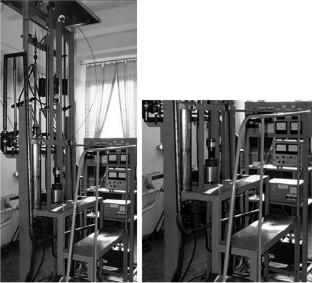Powder Metallurgy and Metal Ceramics ( IF 1 ) Pub Date : 2023-08-14 , DOI: 10.1007/s11106-023-00355-8 Ol. D. Zolotarenko , E. P. Rudakova , An. D. Zolotarenko , N. Y. Akhanova , M. N. Ualkhanova , D. V. Schur , M. T. Gabdullin , T. V. Myronenko , A. D. Zolotarenko , M. V. Chymbai , I. V. Zagorulko , O. A. Kamenetska , M. Yu. Smirnova-Zamkova

|
A scheme for the full cycle of developing 3D products containing carbon nanostructures (CNSs) was developed. The scheme takes into account the state of initial carbon for the synthesis of CNSs and involves the preparation of CNSs for various 3D printing techniques (FDM, CJP, SLA, SLS) with post-processing of the printed 3D products. The developed cycle allows for the transformation of graphite or other carbon-containing materials into functional 3D products using a 3D printer. The 3D development cycle consists of three stages: Stage I is intended to select the starting material and method for CNS synthesis, Stage II involves preparation of CNSs as a consumable for 3D printing, and Stage III includes printing of a 3D product followed by post-processing. Each stage is described in detail and tested for each 3D printing technique (FDM, CJP, SLA, SLS). The entire range of CNSs (fullerenes and fullerene-like nanostructures, graphenes, carbon nanotubes (CNTs), carbon nanofibers (CNFs), nanocomposites, etc.) and their synthesis employing three methods (plasmaassisted chemical synthesis in gaseous and liquid environments and pyrolytic synthesis) in the 3D printing cycle were analyzed. The advantages and disadvantages of the considered 3D printing processes were addressed, and results of the comparison were summarized in a table. Materials for 3D printing and development of associated composites containing soluble and insoluble CNSs were studied. Methods for processing CNSs and preparing CNS-based composites prior to their use in various 3D printing processes were developed. The post-processing results for 3D products prepared with the FDM, CJP, SLA, and SLS 3D printing processes were provided.
中文翻译:

碳纳米结构在各种 3D 打印技术中的应用
制定了包含碳纳米结构 (CNS) 的 3D 产品开发全周期方案。该方案考虑了 CNS 合成的初始碳状态,并涉及为各种 3D 打印技术(FDM、CJP、SLA、SLS)制备 CNS 以及对打印的 3D 产品进行后处理。所开发的循环允许使用 3D 打印机将石墨或其他含碳材料转化为功能性 3D 产品。3D开发周期由三个阶段组成:第一阶段旨在选择CNS合成的起始材料和方法,第二阶段涉及制备CNS作为3D打印的耗材,第三阶段包括打印3D产品,然后进行后期处理。加工。每个阶段均针对每种 3D 打印技术(FDM、CJP、SLA、SLS)进行了详细描述和测试。全系列 CNS(富勒烯和类富勒烯纳米结构、石墨烯、碳纳米管 (CNT)、碳纳米纤维 (CNF)、纳米复合材料等)及其采用三种方法的合成(气态和液态环境中的等离子体辅助化学合成和热解合成) )在 3D 打印周期中进行了分析。讨论了所考虑的 3D 打印工艺的优点和缺点,并将比较结果总结在表格中。研究了用于 3D 打印的材料以及含有可溶性和不溶性 CNS 的相关复合材料的开发。在将 CNS 用于各种 3D 打印过程之前,开发了处理 CNS 和制备 CNS 基复合材料的方法。提供了使用 FDM、CJP、SLA 和 SLS 3D 打印工艺制备的 3D 产品的后处理结果。



























 京公网安备 11010802027423号
京公网安备 11010802027423号